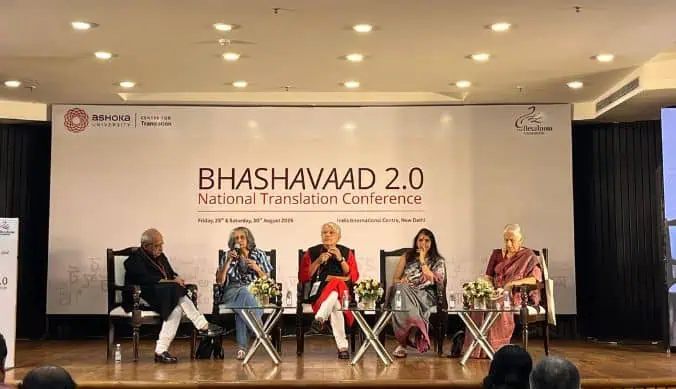Into the Wild: A Journey Through Aravalli Biodiversity Park
Ashoka students explored the Aravalli Biodiversity Park with Vijay Dhasmana, uncovering tales of rewilding, native plants, and healing landscapes.
On the crisp morning of 12 April, the Ashoka Climate Change and Environmental Studies Society embarked on a nature walk like no other, a guided exploration of the Aravalli Biodiversity Park, led by the incredible Vijay Dhasmana, a passionate rewilder whose vision transformed a once-barren, mined land into a breathtaking 392-acre urban forest.
As the morning sun bathed the forest in golden light, our group was greeted by the cheerful chirping of sunbirds and the distinct calls of the laughing dove. With wide eyes and eager hearts, we followed Vijay sir into the wild, where each step felt like peeling back the layers of a centuries-old storybook, one rooted in rock, resistance, and resilience.
The story of the Aravalli Biodiversity Park is nothing short of magical. It began over a decade ago when DLF acquired this land, once ravaged by stone mining. Initially, the Forest Department planted ornamental species, unaware of the power and potential of native flora. That was, until they joined hands with environmentalists like Vijay Dhasmana. Together, they set off on an ambitious journey, tracing native species, diving deep into ecological history, and collecting seeds since 2011. Plant species that grew quickly (within five years) but weren’t of particular interest to humans or animals, letting nature thrive without interference.
As we strolled through the pathways, we touched, smelled, and even tasted our way through the forest (with careful guidance, of course!). Someone tentatively nibbled on a Ratti leaf and gasped in delight as the aftertaste turned sweet, like amla! Faces lit up with surprise, and laughter echoed through the trees. The karonda flower, with its white and subtle pink hue, made us stop for photos, while the Salai tree towered above us like a gentle giant. “I feel like I’m in a secret garden!” someone whispered as we passed the elegant Papeda tree and spotted the Stigma flower climbing beside the Bread flower vine.
Among the marvels was the fascinating story of the Gymnema sylvestre (Gudmar plant). While trekking deeper into the forest, we stumbled upon this curious leaf and were invited to experiment. A few of us bravely chewed the leaf, followed by a sip of water and a bite of a sweet banana cupcake. To our astonishment, the sweetness had vanished! The Gudmar had done its magic, temporarily blocking our sweet receptors. Expecting the familiar sugary taste, we looked at each other in disbelief. Faces crumpled in mock betrayal, and laughter erupted. “It’s like biting into a lie!” someone exclaimed, capturing the sheer surprise of the moment.
We also learned how the Aravalli range, among the world’s oldest geological formations, cradled this rebirth. With its underlayers connecting sandstone stories shaped by ancient volcanic activity and rift valleys, the park is as much a geological wonder as it is ecological. But the path to paradise wasn’t smooth. From resisting proposals for night safaris and science cities to patiently nurturing slow-growing native trees, the journey was one of grit, vision, and a deep love for the land. Today, the park is a sanctuary not just for plants and birds, but for every visitor who enters with curiosity and respect.
As Bharatwaj birds (Crow Pheasant) soared above and we ended our walk under the canopy of an Amaltas tree (Golden Shower Tree or Indian Laburnum), we carried with us not just leaves and pictures, but stories of revival, resistance, and reverence. Aravalli reminded us that healing is possible, and beauty, even in the most broken places, can bloom again.
– Written by Chanda Kumari, ASP 2025
Study at Ashoka












